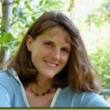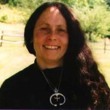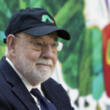An Egg Is Quiet
Description
The evocative text is sure to inspire lively questions and observations. Yet while poetic in voice and elegant in design, the book introduces children to more than 60 types of eggs and an interesting array of egg facts. Even the endpapers brim with information. A tender and fascinating guide that is equally at home being read to a child on a parent's lap as in a classroom reading circle.
More Details
Also in this Series
Published Reviews
Booklist Review
PreS-Gr. 2. This beautifully illustrated introduction to eggs resembles pages drawn from a naturalist's diary. The text, scrolled out in elegant brown ink, works on two levels. Larger print makes simple observations that, read together, sound almost like poetry: An egg is quiet. . . . An egg is colorful. An egg is shapely. On each spread, words in smaller print match up with illustrations to offer more facts about bird and fish eggs across the animal spectrum. The illustrations are too detailed for read-alouds, but there's a great deal here to engage children up close. The succinct text will draw young fact hounds, particularly fans of Steve Jenkins' Biggest, Strongest, Fastest (1995) and his similar titles. Long's illustrations are elegant and simple, and the gallery of eggs, as brilliantly colored and polished as gems, will inspire kids to marvel at animals' variety and beauty. A spread showing X-ray views of young embryos growing into animal young makes this a good choice for reinforcing concepts about life cycles. --Gillian Engberg Copyright 2006 Booklist
Publisher's Weekly Review
Like the subject matter it describes, this book packages with understated elegance the substantive matter found within it. "An egg is quiet. It sits there, under its mother's feathers... on top of its father's feet... buried beneath the sand," Aston (When You Were Born) begins, as spot illustrations zero in on a hummingbird, emperor penguin and sea turtle, respectively. The narrative then launches into a kind of survey about the characteristics of eggs, which follows a simple format. In most spreads, different adjectives (colorful, shapely, textured, etc.) complete the sentence, "An egg is...." This repetitive rhythm contrasts with the visual variety of the illustrations. Long's (Sylvia Long's Mother Goose) skilled use of contrast and compositional balance prevent monotony. For example, a border that resembles a color test pattern runs down the outer edges of a spread of nearly 40 carefully placed "colorful" examples, set against a white background, which dazzle the eye. The main text appears in large, flowery cursive, while a smaller printed typeface serves as labels and brief factual captions. "An egg is clever," in fancy script, for instance, sits alongside examples of camouflage: "An egg might be speckled to resemble the rocks around it." The letters' dramatic curlicues mimic curvy grasses and vines dappled with tiny insect eggs. Long introduces breathtaking color into the final spreads, as a concluding scene "hatches from" this peacefulness, reminding readers of an egg's purpose. This attractive volume pleases on both an aesthetic and intellectual level. Ages 5-10. (Apr.) (c) Copyright PWxyz, LLC. All rights reserved
School Library Journal Review
K-Gr 2-An exceptionally handsome book on eggs, from the delicate ova of the green lacewing to the rosy roe of the Atlantic salmon to the mammoth bulk of an ostrich egg. Aston's simple, readable text celebrates their marvelous diversity, commenting on size, shape, coloration, and where they might be found. The author occasionally attributes sensibilities to eggs ("An egg is clever," for example). Still, her quiet descriptions of egg engineering and embryo development (no mention of mating) are on the mark, and are beautifully supported by Long's splendid watercolor depictions of a wide variety of eggs. (One teeny carp-Steller's jays are not spelled with an "ar," though they are stellar performers when wheedling for your lunch at a campsite!) A beautiful guide to the unexpected panoply of "the egg."-Patricia Manning, formerly at Eastchester Public Library, NY (c) Copyright 2010. Library Journals LLC, a wholly owned subsidiary of Media Source, Inc. No redistribution permitted.
Horn Book Review
Aston uses a very brief primary text to describe the basic characteristics of eggs--they are quiet, warm, shapely. A second level of information is conveyed through additional details provided in small print and in the accompanying ink and watercolor illustrations. The cursive font and poetic phrasing occasionally get in the way of the facts, but Long's paintings are beautiful. (c) Copyright 2010. The Horn Book, Inc., a wholly owned subsidiary of Media Source, Inc. No redistribution permitted. All rights reserved.
Kirkus Book Review
Worthy successor to Ruth Heller's Chickens Aren't The Only Ones (1981), this engrossing album pairs images of dozens of precisely detailed eggs and their diverse wild parents to basic facts presented in neatly hand-lettered lines. Nearly all depicted actual size (and those that aren't, are consistently so labeled), Long's eggs look real enough to pick up, whether placed in natural settings or suspended on white pages. All, whether from birds, insects, reptiles, fish or amphibians, are not only identified, but Aston adds both topical phrases--"Eggs come in different sizes"--to each spread and, usually, memorably presented additional facts: "An ostrich egg can weigh as much as 8 pounds. It's so big and so round, it takes two hands to hold one egg." A delight for budding naturalists of all stripes, flecks, dots and textures. (Picture book/nonfiction. 6-9) Copyright ©Kirkus Reviews, used with permission.
Booklist Reviews
PreS-Gr. 2. This beautifully illustrated introduction to eggs resembles pages drawn from a naturalist's diary. The text, scrolled out in elegant brown ink, works on two levels. Larger print makes simple observations that, read together, sound almost like poetry: "An egg is quiet. . . . An egg is colorful. An egg is shapely." On each spread, words in smaller print match up with illustrations to offer more facts about bird and fish eggs across the animal spectrum. The illustrations are too detailed for read-alouds, but there's a great deal here to engage children up close. The succinct text will draw young fact hounds, particularly fans of Steve Jenkins' Biggest, Strongest, Fastest (1995) and his similar titles. Long's illustrations are elegant and simple, and the gallery of eggs, as brilliantly colored and polished as gems, will inspire kids to marvel at animals' variety and beauty. A spread showing X-ray views of young embryos growing into animal young makes this a good choice for reinforcing concepts about life cycles. ((Reviewed April 15, 2006)) Copyright 2006 Booklist Reviews.
Publishers Weekly Reviews
Like the subject matter it describes, this book packages with understated elegance the substantive matter found within it. "An egg is quiet. It sits there, under its mother's feathers... on top of its father's feet... buried beneath the sand," Aston (When You Were Born ) begins, as spot illustrations zero in on a hummingbird, emperor penguin and sea turtle, respectively. The narrative then launches into a kind of survey about the characteristics of eggs, which follows a simple format. In most spreads, different adjectives (colorful, shapely, textured, etc.) complete the sentence, "An egg is...." This repetitive rhythm contrasts with the visual variety of the illustrations. Long's (Sylvia Long's Mother Goose ) skilled use of contrast and compositional balance prevent monotony. For example, a border that resembles a color test pattern runs down the outer edges of a spread of nearly 40 carefully placed "colorful" examples, set against a white background, which dazzle the eye. The main text appears in large, flowery cursive, while a smaller printed typeface serves as labels and brief factual captions. "An egg is clever," in fancy script, for instance, sits alongside examples of camouflage: "An egg might be speckled to resemble the rocks around it." The letters' dramatic curlicues mimic curvy grasses and vines dappled with tiny insect eggs. Long introduces breathtaking color into the final spreads, as a concluding scene "hatches from" this peacefulness, reminding readers of an egg's purpose. This attractive volume pleases on both an aesthetic and intellectual level. Ages 5-10. (Apr.)
[Page 74]. Copyright 2006 Reed Business Information.School Library Journal Reviews
K-Gr 2 -An exceptionally handsome book on eggs, from the delicate ova of the green lacewing to the rosy roe of the Atlantic salmon to the mammoth bulk of an ostrich egg. Aston's simple, readable text celebrates their marvelous diversity, commenting on size, shape, coloration, and where they might be found. The author occasionally attributes sensibilities to eggs ("An egg is clever," for example). Still, her quiet descriptions of egg engineering and embryo development (no mention of mating) are on the mark, and are beautifully supported by Long's splendid watercolor depictions of a wide variety of eggs. (One teeny carp-Steller's jays are not spelled with an "ar," though they are stellar performers when wheedling for your lunch at a campsite!) A beautiful guide to the unexpected panoply of "the egg."-Patricia Manning, formerly at Eastchester Public Library, NY
[Page 104]. Copyright 2006 Reed Business Information.
































